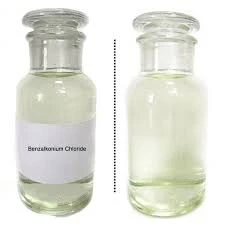polyacrylamide flocculant water treatment
Polyacrylamide Flocculants in Water Treatment
Polyacrylamide (PAM) is a synthetic polymer that has gained significant popularity as a flocculant in water treatment processes. This versatile compound plays a crucial role in separating suspended solids from liquids, thereby enhancing the efficiency of various wastewater treatment systems. The increasing demand for clean water and stringent regulations on wastewater discharge have further accelerated the use of polyacrylamide in various industries.
One of the primary advantages of polyacrylamide is its ability to enhance sedimentation and clarification processes. When added to water, PAM molecules interact with suspended particles, causing them to agglomerate or flocculate. This results in larger, heavier particles that can easily settle at the bottom of a treatment basin or be removed through filtration. As a result, polyacrylamide significantly improves the overall efficiency of water treatment systems, leading to clearer effluent and reduced chemical costs.
Polyacrylamide comes in various forms, including anionic, cationic, and non-ionic, each designed to target specific applications. Anionic PAM is commonly used in industrial wastewater treatment, where negatively charged particles are prevalent. Cationic PAM, on the other hand, is effective in treating potable water by removing organic matter and enhancing the coagulation process. Non-ionic PAM is often utilized in situations where charge compatibility is paramount, providing flexibility in a range of treatment scenarios.
polyacrylamide flocculant water treatment

The application of polyacrylamide is not limited to municipal water treatment facilities. Industries such as mining, paper manufacturing, and oil and gas also employ PAM for its flocculating properties. In mining, for example, polyacrylamide aids in the efficient recovery of minerals by settling fine particulates. In the oil and gas sector, it is used to improve the separation of solids from drilling fluids, thus enhancing operational efficiency and environmental safety.
While polyacrylamide is highly effective as a flocculant, it is important to manage its use carefully. Concerns about the potential toxicity of PAM, especially its breakdown products, have led to increased scrutiny. Therefore, appropriate dosing and monitoring during treatment processes are essential to minimize any potential environmental impact.
In conclusion, polyacrylamide flocculants represent a vital tool in water treatment, providing significant benefits across various sectors. Their ability to facilitate efficient solid-liquid separation makes them indispensable in the quest for cleaner water and sustainable wastewater management. As the world faces escalating water scarcity and pollution challenges, the role of polyacrylamide is likely to grow, underscoring the need for continued research and innovation in this field.
-
Water Treatment with Flocculant Water TreatmentNewsJun.12,2025
-
Polymaleic AnhydrideNewsJun.12,2025
-
Polyaspartic AcidNewsJun.12,2025
-
Enhance Industrial Processes with IsothiazolinonesNewsJun.12,2025
-
Enhance Industrial Processes with PBTCA SolutionsNewsJun.12,2025
-
Dodecyldimethylbenzylammonium Chloride SolutionsNewsJun.12,2025





